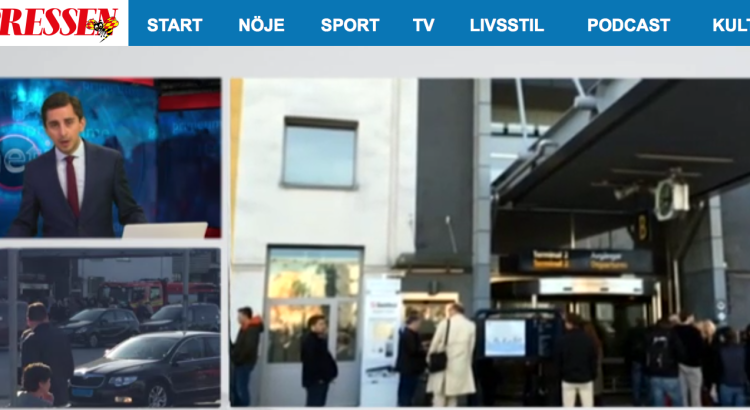Yesterday evening, I was about to head home from Stockholm to London, when terminal 2 at Arlanda Airport was evacuated due to what turned out to be a small fire in one of the cafeterias that set of a fire alarm. Everyone had to leave the terminal and wait outside the building for a rough two hours, resulting in several delays.
During this wait, I decided to post a tweet on what was happening, with the hashtag #Arlanda.
Arlanda terminal 2 evakueras – troligtvis på grund av brand. Inväntar mer information. #arlanda pic.twitter.com/HDdlbX8HKX
— Emelie Fågelstedt (@emeliefagel) May 2, 2016
Within a few minutes, I received a call on my mobile from Expressen TV – the web tv station of one of Sweden’s leading evening newspapers. They asked me if I could live-stream what was happening on-site through Skype. Moments later, an Expressen reporter from the newspaper also called and asked me a few questions on the situation. My words were quickly updated online as part of the article Flygplatsterminal på Arlanda utrymd (Airport terminal at Arlanda, evacuated):
Soon after that, I was speaking with Expressen TV on Skype and walking around filming all that was happening outside the terminal for ten minutes.
Thoughts on citizen journalism
I was impressed by the speed of which the journalists at Expressen found my tweets, and also my phone number, to be able to get my eye-witness report from the site.
Even more, and although I use Skype for work almost every day, it was exciting to see with what ease the service could also be used to broadcast a happening live to thousands of viewers at one of Sweden’s largest newspapers.
According to Wikipedia’s definition, citizen journalism is: “The concept of citizen journalism (also known as “public”, “participatory”, “democratic”,[1] “guerrilla”[2] or “street” journalism[3]) is based upon public citizens “playing an active role in the process of collecting, reporting, analyzing, and disseminating news and information.”"
It’s pretty amazing how today’s technology can be used as a source of instant information for professional journalists, to deliver an eye-witness report from a place or happening. How journalists themselves are not dependent of being at “the right spot at the right time” but rather can rely on social media search to identify people to talk with, and also to ask assist them with broadcasting and photography.
Fortunately, the situation at Arlanda turned out to be nothing serious, and all passengers were able to board their flights and reach their destinations with just a few hours delay. But for me personally, it was an interesting chance to be able to experience first-hand how journalists rely on social media and everyday life tech to deliver breaking news to the public today.

